Entry Type: Event
Arkansas Heritage Month
 Arkansas National Guard Memorial
Arkansas National Guard Memorial
Arkansas Post, Battle of
aka: Battle of Fort Hindman
aka: Battle of Post of Arkansas
Arkansas Prison Blood Scandal
 Arkansas Quarter Press Conference
Arkansas Quarter Press Conference
Arkansas Rice Festival
 Arkansas River 2019 Flood
Arkansas River 2019 Flood
Arkansas River and Prairie Grove, Skirmishes at
Arkansas River near Little Rock, Expedition on the
Arkansas River near Pine Bluff, Scout on the
Arkansas River, Scout to
aka: Skirmish at Threkeld's Ferry
Arkansas Scottish Festival
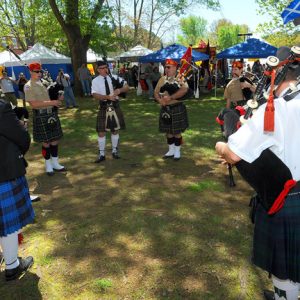 Arkansas Scottish Festival
Arkansas Scottish Festival
Arkansas Shakespeare Theatre
 Arkansas State Archives
Arkansas State Archives
Arkansas State Capitol, Desegregation of the
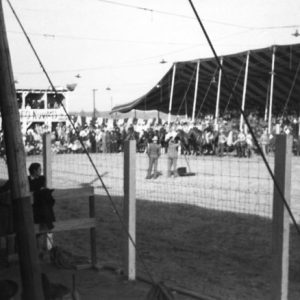 Arkansas State Fair
Arkansas State Fair
Arkansas State Fair and Livestock Show
aka: Arkansas State Fair
Arkansas Territorial Centennial
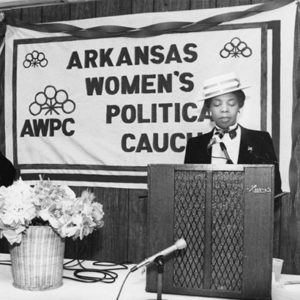 Arkansas Women's Political Caucus
Arkansas Women's Political Caucus
Armstrong, J. M. (Execution of)
Arterberry, William (Lynching of)
Ashley County Lynching of 1857
Ashley County Lynchings of 1877 and 1884
aka: George Jackson (Lynching of)
aka: Sam Jackson (Lynching of)
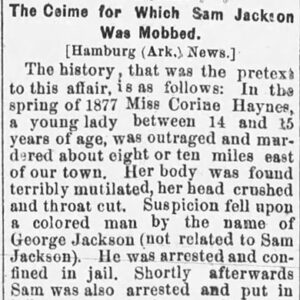 Ashley County Lynching Article
Ashley County Lynching Article
Ashley’s Station, Action at
aka: Action at Jones' Station
aka: Action at DeValls Bluff
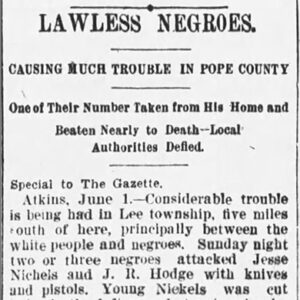 Atkins Race War Article
Atkins Race War Article
Atkins Race War of 1897
Atkins, Jerry (Lynching of)
Atkinson, Wash (Lynching of)
 Wash Atkinson Lynching Article
Wash Atkinson Lynching Article
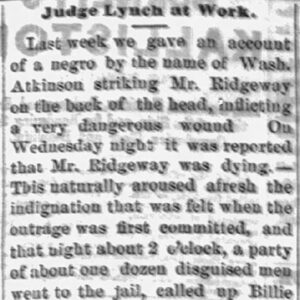 Wash Atkinson Lynching Article
Wash Atkinson Lynching Article
Augusta Expedition (December 7–8, 1864)
Augusta Expedition (January 4–27, 1865)
Augusta, Skirmish at
Avery, Andrew (Lynching of)
 Andrew Avery Lynching Article
Andrew Avery Lynching Article
B-17 Flying Fortress Explosion of 1943
B-25 Bomber Crash of 1947
B-25 Bomber Crash of 1948
B-26 Bomber Crash of 1944
B-26A Bomber Crash of 1942
aka: Crash Site of AC 41-744
 B-26C Marauder
B-26C Marauder
B-47 Bomber Crash of 1960
 B-47E
B-47E
Back-to-Africa Movement
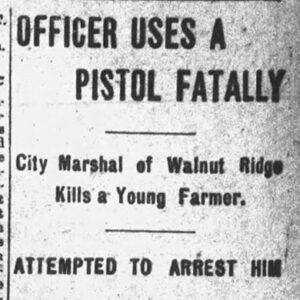 Bagley-Ridgeway Feud Article
Bagley-Ridgeway Feud Article
 Bailey Lynching Article
Bailey Lynching Article
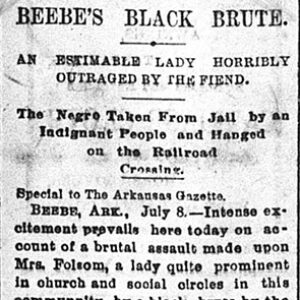 Bailey Lynching Article
Bailey Lynching Article




